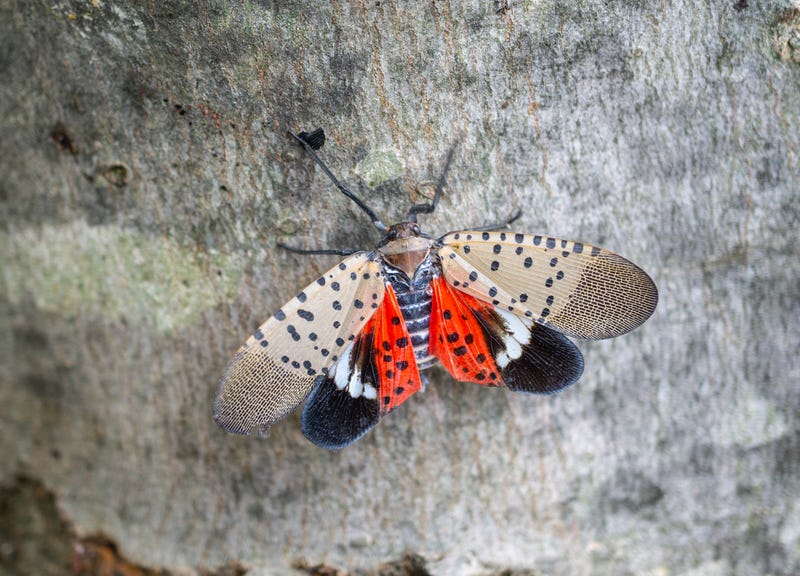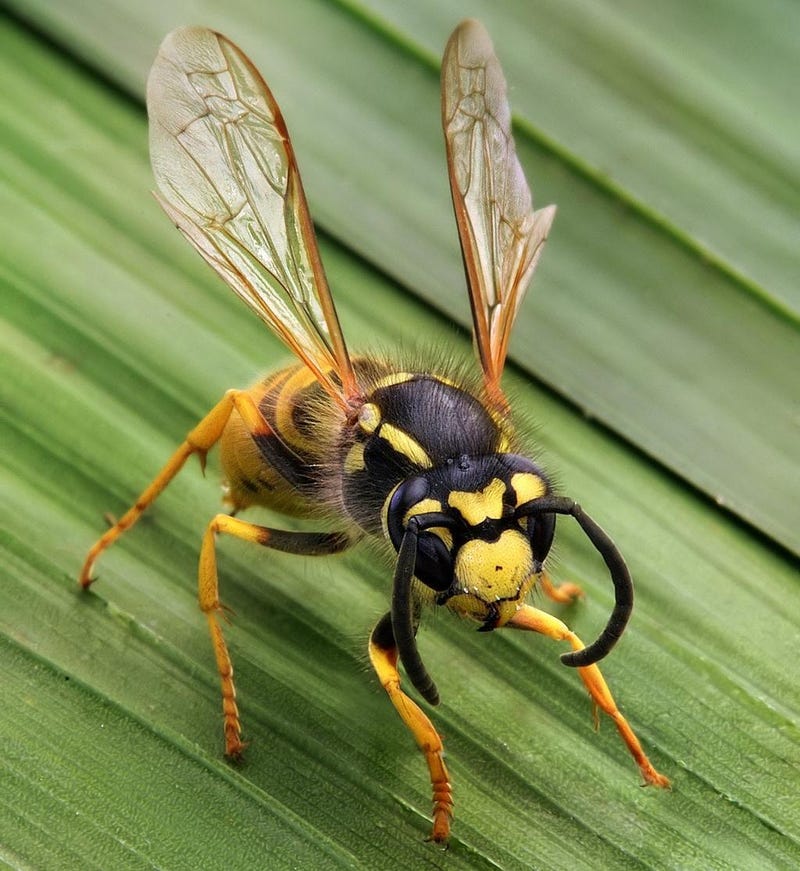Insects are cool (if you look past all the legs). They break down dead things by eating them and pollinate plants so that we can grow enough crops to feed the world. Conservation encourages us to protect wildlife, especially bugs that are now looking down the barrel of an insect apocalypse.
But… sometimes you have to kill a few bugs to protect entire ecosystems. Specifically, invasive insects, which humans have transported all around the world. In some cases, they’ve outcompeted native insects and wrecked native plant life that don’t have the defence mechanisms to deal with invasive insect species that have no business being there in the first place. In some cases, invasive species have been able to expand their populations at a rapid clip if there are no natural predators to keep them in check.
Experts have asked the public to show no mercy and just annihilate species that have been identified as invasive and destructive. With that in mind, we invite you to take a close look at these suspect species and do what biologists say is your duty to stamp them out. Literally.
A version of this story was originally published on January 31, 2022.
Yellow-Legged Hornet

We’ve all seen hornets flying about, striking fear everywhere they go. And now there is a new variation of these insects to worry about: yellow-legged hornets. The Georgia Department of Agriculture announced earlier this month that a beekeeper in Savannah found what was eventually identified as one of the yellow-legged hornets, aka Asian hornets.
These insects destroy honeybee colonies. They’re originally from southeast Asia, and have since spread to most of Europe. The recent discovery in Georgia is the first detection of this hornet alive out in the wild in the U.S. according to Georgia officials. The last thing the U.S. honeybees need is a swarm of invasive hornets killing and eating them. Bees are important pollinators, food producers, and dozens of crops in the country rely on them.
If you’re in the region where these invasive insects were sighted and think you’ve seen one of these hornets, report it to the Georgia Department of Agriculture. And of course, squish them.
Spotted Lanternfly

This bug may be beautiful, but you have the permission of many experts to murder it on sight. The spotted lanternfly was first discovered in Pennsylvania in 2014 and has rapidly spread across the Northeast. They grow up to an inch (3 centimeters) long and have speckled front wings and red hind wings with black spots. They’re not a risk to you, but they are a huge concern for agriculture. When they eat crops, the bugs excrete a goop called honeydew that creates a film on crops, reducing yields. They also harm trees, drinking their sap and leaving them dry and weakened.
Asian Tiger Mosquito

Unlike some of the other insects on this list, this one can actually bite us. The Asian tiger mosquito—distinguished by its black body with white stripes—is native to Southeast Asia and was introduced to the U.S. sometime in the 1980s. It has spread to more than 20 states since then, including California, Florida, Georgia, the Carolinas, and Tennessee. It can spread the West Nile virus, dengue, and even chikungunya. The CDC recommends wearing bug sprays that have DEET in it to avoid being bitten, and if you see it flying around your home, smash it immediately. Of course, that advice goes for regular mosquitos, too, so there’s no need to inspect the bug for stripes before killing it.
Spongy Moth

Sadly, the invasive spongy moth—which is native to Europe, Asia, and North Africa—is extremely cute and looks like a cuddly bat. Its eyes almost scream “don’t squish me.” But squish it you must. The spongy moth doesn’t belong here. First brought to Massachusetts back in the 1800s, it has spread across the northeastern U.S. and eastern Canada and costs hundreds of millions of dollars in damage and population control efforts every year.
The spongy month—the name of which the Entomological Society of America changed last year because it was hurtful to the Romani people—is capable of defoliating hundreds of tree and shrub species, its larvae can practically devour entire trees.
Southern Pine Beetle

These little critters look like something out of a sci-fi movie, and they’re kind of whimsical… but they still deserve the tiniest of guillotines. The beetle is native to the Southeast, but it’s increasingly found in the Northeastern states like Maine and New Hampshire where it can potentially destroy acres upon acres of pine forests. (Since they’re native to the Southeast, you shouldn’t kill them if you find them there.) Before 2014, the beetle had not been found north of New Jersey, but warm weather is luring it to forests into the Northeast. This spread is only expected to continue thanks to climate change further warming the planet.
Brown Marmorated Stink Bug

The brown marmorated stink bug is native to East Asia and may look unique and worthy of a Victorian-era brooch. But yeah, you gotta kill it, too. Like some of the other insects in the roundup, this stink bug damages fruit, vegetable, and field crops causing extensive economic damage across both North America and Europe.
Rosy Wolfsnail aka Cannibal Snail

Not technically a bug, but close enough. This snail has a really cool conical pinkish shell, but sadly, it has to be eliminated—from some areas, at least. The rosy wolfsnail is originally from Southeastern states like Florida, North Carolina, South Carolina, and Georgia, but it has spread to Hawaii and endangered native snails there. It’s called the “cannibal” snail because it will eat other rosy wolfsnails and their eggs. It will also devour other types of snails. It was introduced to Hawaii in the 1950s to help control the population of an African snail, but it has since pushed several Hawaiian snails into extinction. If you see one in Hawaii, please kill it.
Emerald Ash Borer

The emerald ash borer looks like it is made out of jewellery and magic, but please do not use that to overlook the fact that this enchanting insect has destroyed “tens of millions of ash trees” across the U.S. This bug, originally from northeast Asia, was first spotted in Michigan in 2002.
By the time they’re seen in their glorious green adult stage… it may already be too late for nearby trees. The larvae burrow in the bark of ash trees, destroying the internal networks that transport nutrients and water to other parts of the tree. and infestations have been reported in at least 35 states across the country.
Khapra Beetle

This fuzzy bean-looking bug may be small, but like its invasive fellows, it’s dangerous and deserves the death penalty. The khapra beetle is native to South Asia and was discovered in California in the 1950s—it has been described as one of the most invasive species and its’ larvae usually eats up stored products like stored grain. Cargo ships are constantly working towards intercepting shipments with these critters in them to avoid them from spreading around.
German Yellowjackets

Wasps are bad enough, and the invasive ones are even worse. They have the audacity to be yellow, like bumble bees, but they are so much more aggressive and can sting repeatedly. German yellowjackets are currently found in northeastern states and throughout the West Coast, according to Penn State Extension. They made it to the U.S. sometime in the 1970s and are pushing out some native wasp species, according to the University of Wisconsin-Milwaukee.
They tend to make their nests in walls and attics. This insect scavenges for protein, so if there are any deli meats at an outdoor picnic, these critters are going to hover.
